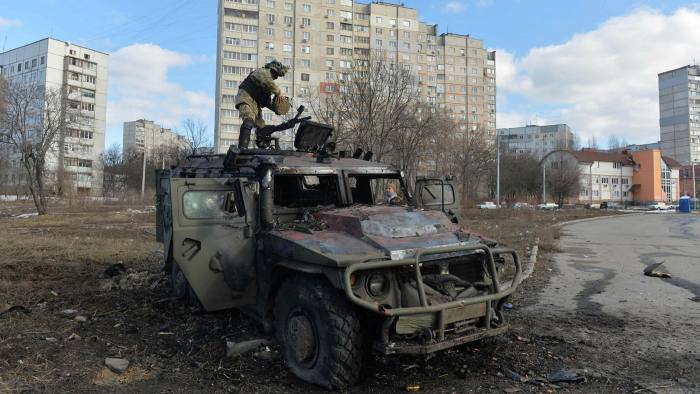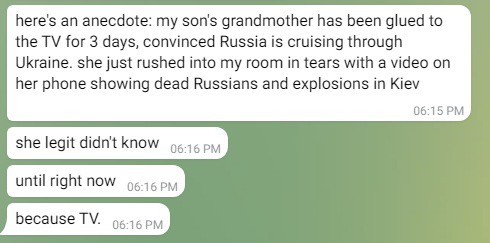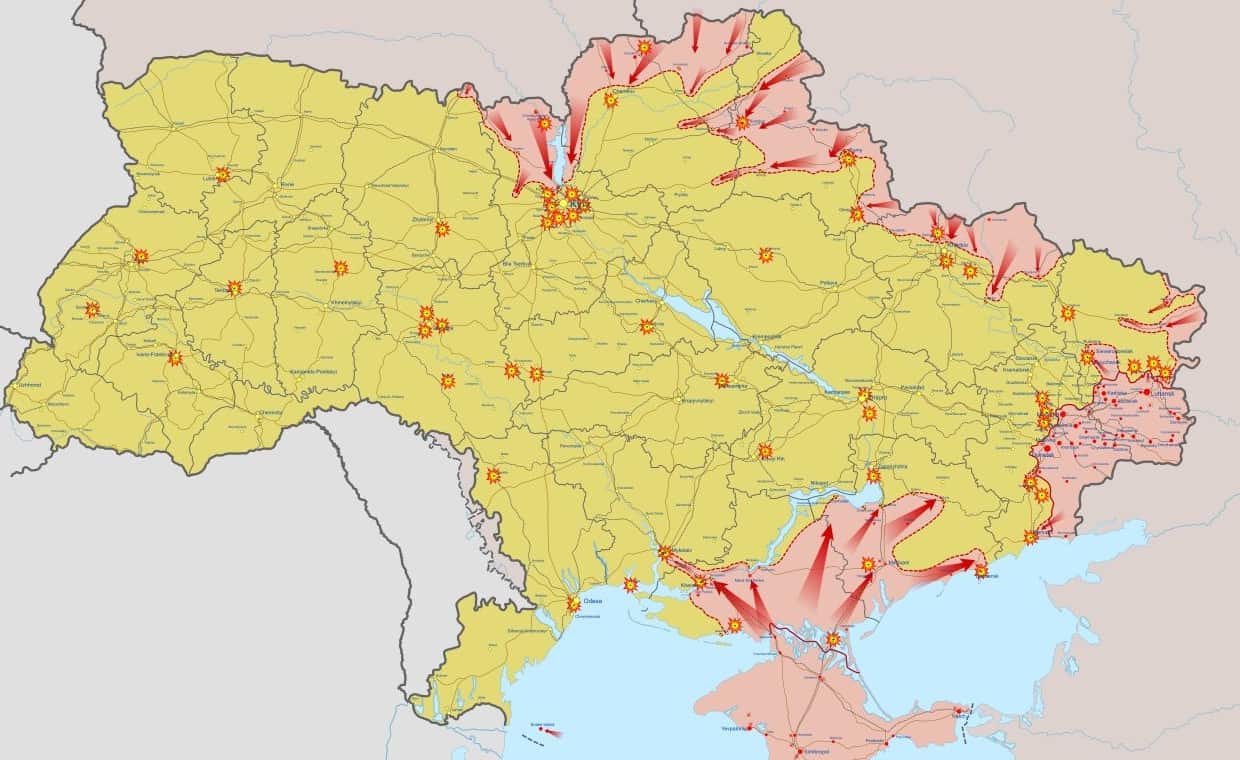Putin’s Political Kid Gloves Are Costing The Russian Grunt
A Russian without his artillery is like an American without his airstrikes

Yesterday (Feb 27) a VDV column moved into the Kiev suburb of Bucha, but then retreated after being hit by a Ukrainian (rocket) artillery strike, leaving behind damaged vehicles and some dead.
This marks the first documented case of Ukrainians firing artillery into a built-up area.
This is ironic because so far the Russians have been extremely reluctant to use artillery against urban areas.
Actually, I hadn’t seen definitive evidence of a Russian artillery barrage on a built-up area before this. (Which doesn’t mean that it didn’t happen.)
But today (Feb 28) there is already footage of Russians using rocket artillery in Kharkov, albeit it is alleged that Ukrainians are doing it too.
The Ukrainians have definitely adopted the strategy of withdrawing into cities, which also means they have positioned their artillery there, which they’re using to fire at the Russians on the outskirts.
As you may imagine this leaves Ukrainian civilians in an unenviable position:
It also leaves the Russians in a position where if they persist in their shunning of artillery then they’re in a contest where the other side has big gun support, and they don’t — even though it is actually they who have far more and far more capable artillery.
This artillery taboo, demonstrated in the first days of the war, is asking a lot of the Russian troops. It’s the equivalent of asking US troops to fight without air support. It isn’t what they train for, or what they are equipped and organized for. It’s taking *the thing* that their way of war is organized around away from them.
It is safe to say that in taking on the artillery taboo Russia has accepted to sustain greater losses to its military in order to spare more civilians.
Another way in which a lot is being asked of the Russian troops is that small units are being sent on “thunder runs” down roads deep ahead of the main force (the main force which in many sectors is still in Russia). We’re not even talking battalion tactical groups (which are a well-rounded combined arms formation). We’re often talking mere companies. Sometimes tanks alone without infantry, or infantry without tanks.
This has meant significant losses when they run into even weak resistance. Or when they establish weak perimeters (I’ve seen junctions guarded by just a few men or tanks) and are opportunistically hit by small counter-attacks that would normally be no threat to the Russians.
Or when their support elements left far behind but racing to catch up get annihilated in an ambush.
Put differently, the Russian military is designed to— and is very good at — fighting as a combined-arms mass. Yet it has been throwing this advantage away in order to send small units to race ahead and engage in small-scale fights decided by the luck of the draw.
It is very difficult to understand why this is so because this is not Russian doctrine. It has definitely led to hundreds of unnecessary losses.
It has served to give Ukrainians heart, and to convince some of their more delusional Western backers that the Ukrainians are somehow “winning”.
On the other hand, this morning (Feb 27) it was reported that a five-kilometer (!) columnwas on its way from the Belarusian border to Kiev. So perhaps the days of Russian troops being asked to fight in formations smaller than BTGs that can’t even reliably do force protection are over.
At the same time, it is important to keep perspective. Even with questionable tactics and the artillery taboo, the Russians have had significant success. It is the Ukrainians who are on the backfoot and who have undoubtedly sustained greater losses.
You have to understand the information environment in which we find ourselves. The Russians are trying to keep the attention away from casualties, Russian and Ukrainian alike, as much as possible. They are not filming anything. (Except Ukrainian POWs, they love to film those.)

The Ukrainians meanwhile are filming all the Russian wreckages and the dead that they can find. But they are much more reluctant to film their own losses.
This creates the impression for someone scrolling through war videos on Twitter or Telegram that Russians are already in a bloody stalemate. That isn’t correct.
The map tells a story of its own. So do the facts that Ukrainians are blowing up bridges, pleading for talks, distributing weapons to civilians, and abandoning the countryside for cities.
And that’s with the Russians having committed under half of their forces. They still have a lot in the tank. If there isn’t a Gomel peace the map is going to look much different in a week. (Which may come as a shock to some people drawing too many conclusions from Ukrainian footage.)

I’ll say another thing. I am on the record as being against the war on account of the human cost. I said a victory for Russia would take thousands of Russian and tens of thousands of Ukrainian lives.
It is now clear that lives that would be lost weighed on Putin as well. Not just Russian lives, but primarily Ukrainian ones and especially civilians.
But it is also clear that Putin thought that war could be waged and won in kid gloves, without the use of artillery or airstrikes (or ballistic missiles against Ukrainian army barracks in the opening night). Or at least that it was worth a shot.
And that is how he went into the war — asking of the military to fight with one arm tied behind its back and to accept greater losses to its own men in order to spare Ukrainians.
I think this has shown itself as unworkable and costly. It has led to greater losses and prevented the Russians from being able to take or blockade even smaller cities like Chernigov to say nothing of the sprawling Kharkov.
I think the artillery taboo will be gradually softened over the coming days.
An important junction on the flank (north of Kiev) in a wooded area is left guarded only by a pair of tanks. The price is paid when Ukies return for a counter-attack with a small combined-arms unit:
Rosgvardia (light garrison infantry) inexplicably sent to drive around hot territory on its own, and the price is paid to rocket artillery strike:
Tiny infantry unit sent to penetrate deep into a hostile city with no flank or heavy support, and the price is paid when enemy, which is left to maneuver freely, ambushes it from behind:
Thunder-running:
Too much, too fast, with too little:
Too much, too fast, with too little:
Too much, too fast, with too little:
Four days of war before the first Su-34 is seen. Up until then, only the rare Russian Su-25 had made an appearance:


